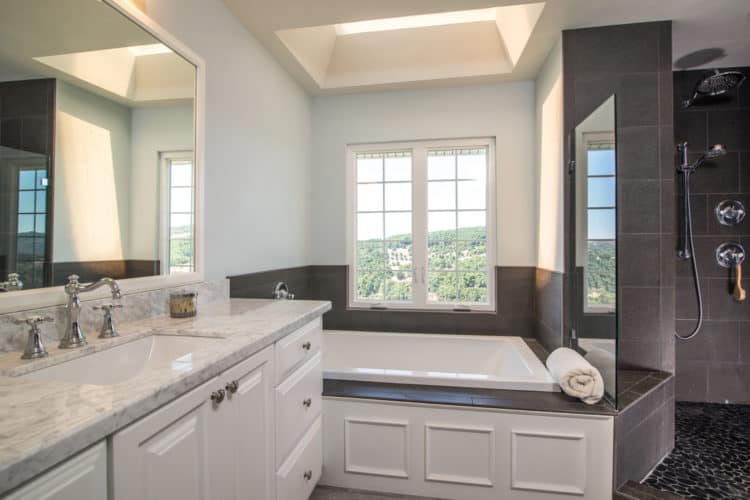
Construction Industry News: Why Your Home Renovation May Cost More In 2018
The construction industry has been abuzz lately with the news that President Trump has announced another massive tariff on goods imported from China. This time, $200 billion worth of Chinese goods will face import taxes, with much of the goods being used specifically on construction projects.
This new tariff comes in the wake of a $50 billion tariff on Chinese goods earlier this year and additional tariffs on foreign steel and aluminum as well as Canadian lumber. These extra import taxes are putting pressure on construction companies to find ways to reduce costs, or else they will have to start charging higher prices for home remodels and builds.
In this post we’re going to dig into some of these rising challenges in the construction industry. We will also cover some of the top renovation trends of 2018 and tell you how the past and pending tariffs will affect any planned home renovation projects you have for 2019.
First, let’s give you a recap of the tariffs in regards to the latest construction industry news.
The Trump Tariffs on Imported Goods
During the Trump administration, the construction industry has become quite familiar with tariffs on imported goods.
During his “America first” initiative, aimed to promote American companies, jobs, and materials over foreign products, tariffs have been placed on goods used in the construction industry such as lumber, steel and aluminum, and dozens of others in recent tariffs imposed upon China.
The first domino to fall in this tariff frenzy was when the Department of Commerce placed import taxes on five Canadian lumber companies in March of 2017. This tariff ranged between three and 24 percent (an average of 20.83 percent) on all Canadian soft lumber and was placed in response to Canada’s import restriction of U.S. dairy products. The move was made to increase American lumber production and create jobs, but instead, it has caused lumber prices to go up 31 percent. These added costs are often absorbed by the home buyer.
A year later on March 8, 2018, President Trump placed a 25 percent tariff on imported steel and a 10 percent tariff on imported aluminum. This order went into effect on March 23, and put the U.S. housing industry on notice, now that the majority of the main materials used in housing projects were having their prices raised. Trade organizations like the National Association of Homebuilders spoke out against the tariffs, claiming they could not have come at a worse time for the U.S. housing market.
This is because new home builds and home renovation projects were rapidly on the rise prior to the tariffs being passed. Home values were reaching all-time highs, making it a great time for homeowners to use the extra cash to boost their home’s value even further through a new kitchen, bathroom, addition, or other renovation.
These tariffs combined already hiked up prices on home construction projects for construction companies and consumers alike. Projects that were already signed into a contract before still need to be honored, with construction companies having to eat the extra costs of lumber and goods. Moving forward, this has forced many companies to place “escalation clauses” into their contracts, which allow for home renovation estimating costs to change should the price of materials go up when they are needed.
The cost of steel and aluminum is expected to rise but has less of an impact on residential housing than does the tariff on lumber, as most single-family homes are primarily built with wood. Steel and aluminum account for just 0.5 percent to one percent of a home builder’s entire cost. Meanwhile, lumber is one-third or more of the cost of building a new home.
Where the tariffs on steel and aluminum will be felt the most is in construction projects to build apartment or condo complexes because these will use far more steel than a single-family home. Some of these extra costs may eventually be absorbed by the renters and buyers of these apartments and condos.
The combination of lumber and steel and aluminum tariffs will increase the cost of new homes. When you factor in other building materials and heating and cooling systems, you can see how the tariffs will really be adding expenses everywhere.
What is known is that the combined tariffs on everything from building materials to appliances will increase the overall cost of new homes. The true impact of this tariff won’t be seen until the next wave of home construction begins next year, when builders will be forced to pay for the higher material costs of Canadian lumber for construction jobs that are already contracted.
Cities also are having a tough time meeting demand for housing, because the tariffs on materials are sending the prices skyrocketing. This has caused a shortage of affordable housing in major cities across the country as companies either aren’t able to meet demand with their supply or can’t afford the material due to the new prices.
New residential construction also reached a 10-year high in 2017, showing that people are eager to build homes. However, the tariff on Canadian lumber has created a difficult market to build new homes given the extra costs associated. For example, the tariff on Canadian lumber added an average of $6,000 to $10,000 on top of the cost of a median-priced home.
The Canadian lumber duty is also projected to reduce its investment in American single-family homes by $1.1 billion. If this big of a reduction actually occurs, new homeowners would have to wait longer than usual for their homes to be built, as prices of lumber may be too high.
While the lumber tariff has more of an effect on home builds and renovations, the steel and aluminum tariff is raising prices in the commercial arena, plus for apartment buildings and multi-family condo communities. The tariffs against China, however, will affect construction projects of all kinds, but especially those to build a new home.
The Chinese Tariffs
Recently, President Trump announced tariffs on $200 billion worth of Chinese goods and said he would place an additional tax on all imports. This was on top of the previous $50 billion tariff he had already placed earlier in 2018. At this point, roughly half of all Chinese imports to the U.S. face import taxes. Trump is calling for taxes on all of them.
While the first round of tariffs did not have a large impact on American consumers or construction companies, this second wave will end up raising prices, especially for home buyers. All building materials and housewares should see their prices rise.
Impact on Home Renovation Costs
Because of these tariffs, home renovation prices will rise at a time when renovation projects are in high demand. The latest round of tariffs includes roughly $10 billion worth of Chinese products that are exclusive to the homebuilding and renovation industry, according to the National Association of Home Builders.
The tariff on these goods will begin at 10 percent but may reach 25 percent by the end of 2019. This would add up to a $2.5 billion tax increase in the industry. This tax would cause prices on construction materials to increase, which would of course be added to the price of homes or home renovation projects.
While putting it in numbers gives you an idea of the total price hike the country will be dividing up for renovation projects, it puts things further in perspective when you consider the types of materials that will soon have an increase in price. The Chinese goods that will now be taxed include walls, floorboards, cabinets, light fixtures, heat and cooling equipment, ceramic, natural stone, glass, tile, marble, granite, and quartz, among others.
Taking quick stock and you’ll see what kinds of projects can expect to see higher prices. If you are tearing up your carpet and putting doing a hardwood floor remodel, you can expect the prices to be higher. Simple renovations to update to LED lighting will have more expensive fixtures. The ever-important central air or modern heating unit will come at a heftier price as well.
Remodeling the kitchen, often one of the best renovation projects to boost the value of a home, will be much more of an investment since cabinets, tile for flooring and backsplash, and materials used for countertops are all under the tariff. Likewise, bathroom remodels will be more expensive thanks to import taxes on ceramics and tile.
Industry experts predict that the import duties on these items will rise at least 15 to 20 percent. With the costs of these materials that are often used in home renovation costs going up, so too will home renovation estimating costs, and the price for the completed job.
Effect on Current Home Renovation Trends
Many of these newly-taxed goods are involved in some of the more popular home renovation trends of the moment.
For example, bold-colored cabinets have become more popular to give a more modern look to the kitchen with a blast of color. Kitchen remodels are also proven to be one of the most impactful home improvements you can make to your home’s overall value. When you add in the price of tile and countertops to the cabinets, homeowners may think twice about investing so much money for the remodel, since they might not get as much of a return to their value given the elevated cost of goods.
Likewise, waterfall countertops have become very fashionable, but now will be much more expensive to install. Colorful or patterned bathroom floor tile also will now come with an added cost.
Summary
All of this is to say that home renovations will come at a higher cost for the remainder of 2018 and even more so in 2019. As the trade war rages on, each tariff seems to cause more and more damage to the wallet of consumers, rather than protect the American people as intended.
Sources:
https://www.nytimes.com/2018/06/11/business/dealbook/trump-tariffs-canada-lumber.html
https://www.cnbc.com/2018/09/24/new-chinese-tariffs-make-home-renovations-more-expensive.html
https://longroofing.com/blog/the-top-2018-home-trends-in-renovation-and-design/











